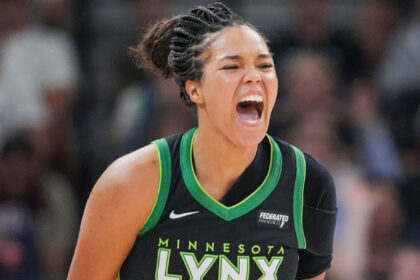WNBA CBA Negotiations: Are They Close to a Deal?
A year ago, the WNBA Players Association announced its intention to terminate the current collective bargaining agreement (CBA), with an expiration date after the 2025 season. This move, according to WNBPA President Nneka Ogwumike, was a “defining moment” for the league and for those who believe in progress. The players’ main goal was to establish a new economic model based on equity, “claiming the fair share of the business we have built.”
Despite the time elapsed, the possibility of a new agreement before the deadline of October 31st is uncertain. Erin Drake, legal advisor to the WNBPA, expressed her lack of confidence that an agreement will be reached by that date. Tensions have increased since then, with the players expressing their frustration at the lack of progress in the negotiations.
Napheesa Collier, vice president of the WNBPA, criticized the WNBA’s leadership, calling it “the worst in the world,” which was supported by several league stars. With the 2025 season and the Finals already in the past, attention is focused on what happens at the negotiating table. WNBPA Executive Director Terri Jackson emphasized the players’ determination, who have been focused on their goals for a year.
[The players are] really clear and focused on what they are fighting for, and what they said a year ago was true six months ago, six weeks ago, six days ago.
Terri Jackson
Although it’s not yet time to panic, as both parties could agree on an extension to continue negotiations in November or beyond, the urgency is evident. Alofoke Deportes explores the details of the most important negotiations in the history of the league.
Negotiation Structure
Negotiation sessions involve various stakeholders. WNBA and NBA staff, along with their legal advisors, represent the league, with WNBA Commissioner Cathy Engelbert attending all substantive meetings. For their part, WNBPA staff and legal advisors are the main participants from the union, although WNBPA advisors and player leaders may also attend.
The CBA committee of the players is usually made up of at least 33 players, including representatives from each team, members of the executive committee, and other players. The league has its own labor relations committee, composed of team owners and executives. The first meeting between the league and the WNBPA took place in December, followed by a broader meeting during the All-Star weekend in July. Since then, the WNBPA has met with the players’ leaders regularly, although participation and scope have varied.
The Main Obstacle: The Salary Model
The negotiations have focused on the differences over how salaries should be determined. The WNBPA seeks a system where the percentage of revenue allocated to salaries increases with business growth. WNBA players point out that the league’s proposals include a salary cap that increases at a fixed rate, similar to the current agreement with annual increases of 3%.
The league’s salary cap was $1,507,100 in 2025, with a minimum salary of $66,079 and a maximum of $249,244. The current agreement also includes a revenue-sharing provision that could generate direct payments to players if the league reaches certain revenue targets, but it has not yet been activated.
A WNBA spokesperson stated that they agree with the players that they deserve to earn more and participate in the league’s success through revenue sharing. The league’s proposal includes significant guaranteed increases in the salary cap and an uncapped revenue sharing that allows player salaries to grow with the league.
Adam Silver, NBA commissioner, mentioned that WNBA players will receive a “significant raise” in their salaries, but highlighted the “absolute numbers” as a measure of growth instead of revenue sharing. The WNBPA responded via an Instagram story, questioning if they don’t want to share.
Terri Jackson highlighted that the players are seeking a salary system that values their work and allows them to grow with the business they are driving. The league, according to Jackson, has tried to delay the process and intentionally undervalue the players.
The WNBA has experienced record growth in recent years, with an increase in attendance, viewership, merchandise sales, and franchise value. Engelbert emphasized the importance of “balancing” the increase in player salaries with the long-term viability of the league, including expansion to 18 teams by the end of the decade.
What Happens Next?
The current collective bargaining agreement expires in nine days, and although Sophie Cunningham mentioned the possibility of a lockout, the deadline’s expiration doesn’t automatically imply that this will happen. It’s likely that the league and the union will agree to an extension to have more time to negotiate, as happened before the last agreement. A league source expressed optimism that there will be no work stoppage.
However, this year, the extension of the deadline has broader implications, especially with the incorporation of two new franchises, Toronto and Portland, which will begin playing next season. An expansion draft for both teams must be held before a massive free agency that will involve most of the league’s players who are not currently under rookie contracts.
The parameters for the expansion draft must be established in the new collective bargaining agreement. However, a league source revealed that rules or guidelines have not yet been provided to any of the franchises. The Golden State Valkyries draft was held on December 6, 2024, allowing the 12 teams to protect six players. The Valkyries selected 11 players, taking one from each team, except Seattle. It is expected that, in this expansion draft, teams can only protect five players. The expectation is that the expansion draft will be held as soon as possible after the collective bargaining agreement is established.






